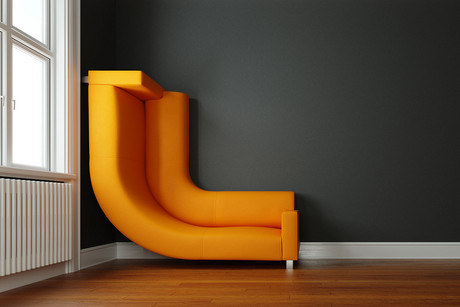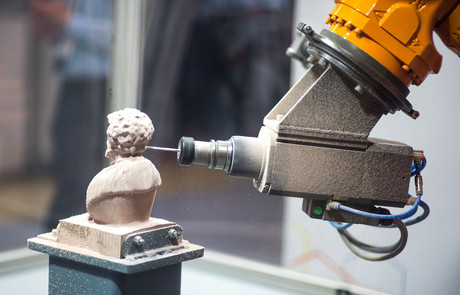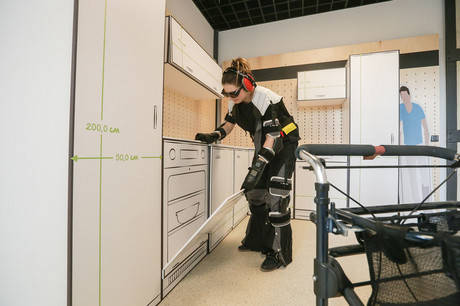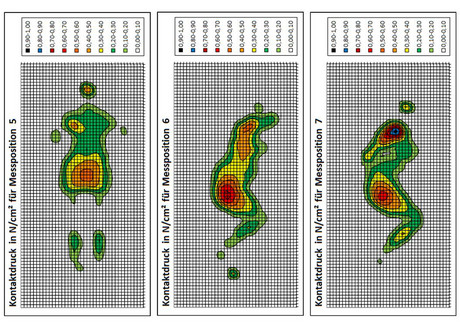Furniture
The Furniture Area is subdivided into the sections of Design & Technology, Testing & Evaluation and Space & Utilisation. Each of these sub-areas is assigned its own laboratory area where, based on long-standing experience, the interdisciplinary team of the area efficiently tackles current issues.
Thereby, most diverse products are holistically being developed, tested and evaluated in the context of the residential environment and, beyond the processes of manufacture and utilisation, also with a view to their re-use and recyclability.
- Furniture design and technology
- Manufacturing methods and processes
- Requirement and environment analysis
- Structure optimisation and lightweight design
- Upholstery, mattresses and spring systems
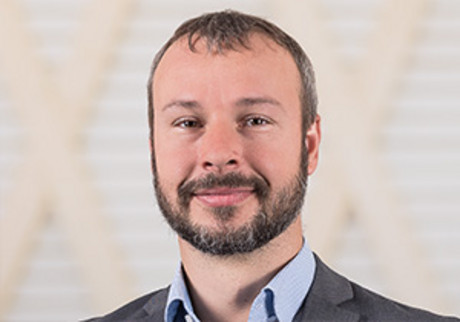
Dipl.-Ing.
Ronny Lang
Head of Departement · Design · Structural analysis
Furniture design and Technology
Genuine innovation may emerge from the strangest ideas. Therefore, it is important to us to take different perspectives during the development process and question existing assumptions. A variety of methods complement our holistic approach – from hand sketches to virtual design tools.
- Tables, seating and box furniture constructions
- Application-related component design/use of material determined by requirements
- Jointing and fittings technology
- Universal and individual functional furniture
- Multidisciplinary and user-focussed design processes
- Visual communication and virtual product development
Manufacturing methods and processes
Innovation does not end with the product. Thinking outside the box allows well-known manufacturing methods to be applied in a new setting and, therefore, manufacturing processes to be redesigned. In this respect, present-day and future flows of materials, energy and information are of central importance.
- Production technology in furniture manufacture
- Digitalisation in furniture manufacture
- Controlling, measuring and regulating
- Automation
- Product development processes and data management
Requirement and environment analysis
Requirements of products emerge from the actual interaction with the them in the room context. Detailed analysis of Routines and space for movement of various user groups Form the basis for the development of individual user-specific features and their adjustment.
- Ergonomics, notion profile and interaction analysis with motion capture
- Processes of actions, communications and teams
- Room design, interior design and usability
- Digitalisation and the Smart Home
- Methods of product evaluation and fitness for use
Structure optimisation and lightweight design
The interpretation of a design does not only serve to prove strength and function. It rather aims to save resources and find innovative solutions by structure optimisation and systematic approaches, such as Design for Recycling.
- Structural analysis and numerical simulation (finite element method)
- CAD, material modelling and non-linear systems
- Lightweight moulded construction according to bionic principles
- Lightweight material construction or bio-based material substitution
- Composite materials and material development
- Product and material recycling
Upholstery, mattresses and spring systems
Upholstery is a complex system consisting of a slat base, spring core, foams of varying hardness and the cover. They serve to provide comfort and therefore require special attention in their dimensioning with regard to load load transfer and distribution as well as temperature and moisture transport.
- Upholstered furniture and textile interior design
- Bed design and mattresses
- Comfort and spring properties
- Temperature and moisture transport
- Requirements of hygiene and medical products
Services Furniture
We provide development-accompanying services in the fields of requirement research, concept and structural design as well as technology development and testing.
USEability Lab (in cooperation with WohnXperium)
- User analysis and requirement research
- Concept design, execution and evaluation of interaction experiments
- User-oriented concept design of products
- Determining and implementing design specifications
Processing laboratory
- Development of technologies
- Development of modular product architectures
- Determination of characteristics of structural parts and assemblies
- Prototyping
Furniture testing laboratory
- Development-accompanying testing (carcass furniture seating furniture, tables)
- Strength testing, functional fatigue and durability testing for various requirements of environments (e.g., offices)
- Development of testing algorithms of furniture for special points of attention
- Microclimatic upholstery testing
- Simulations of use
- Structural analysis by wax of the finite element method
- Foam and mattress specification
Technical equipment
Reproducible measuring and test results are a prerequisite for reliable assessment.
Strength testing
- Test stand for mattress ageing (Zacher Components)
- Test stand for foam ageing (IHD)
- Material-testing machines (Hegewald & Peschke)
- Universal furniture test stands (Hegewald & Peschke)
Functional testing
- Programmable logic controller for strength and functional fatigue testing (FESTO, SIEMENS, IHD)
- Test robots (incl. simulations of use, universal robots)
- Pressure-measuring mat (ABW)
Climate testing
- Micro-climate testing facility (IHD)
- Extreme-climate simulation chamber
(Temperature range: -40 – 120 °C; test chamber volume: 8 m³)
Manufacturing processes/prototyping
- Processing centre (pMAKA ST20 t) 3,000x1,300x500 mm
- Universal processing platform (IHD) 1,000x700x1,000 mm
- 3D printer (RepRap x400) 400x400x600 mm
- 3D printer SLA (Creality) 150x80x300 mm

